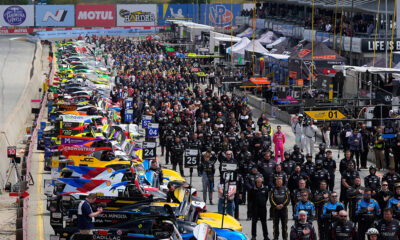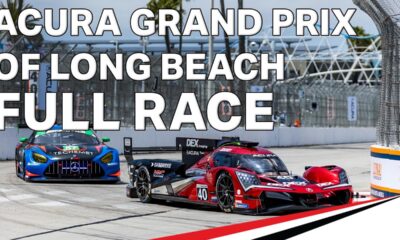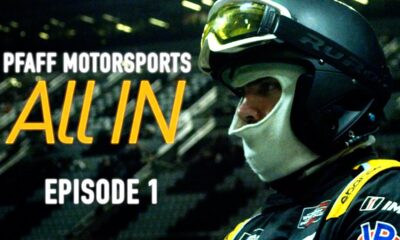
Photo: Jake Galstad/IMSA
Filipe Albuquerque believes that Acura is unlikely to break through and end Cadillac’s streak of dominance at the Acura Grand Prix of Long Beach as the California street circuit does not mesh well with the ARX-05’s characteristics.
Cadillac teams have been undefeated in Long Beach since the DPi-V.R. was introduced in the first year of the DPi formula in 2017.
While the race was won last year by the Action Express Racing duo of Felipe Nasr and Pipo Derani, Albuquerque himself took back-to-back wins in the event in 2018 and 2019.
Last year, the Portuguese ace finished fourth in the No. 10 Wayne Taylor Racing Acura DPi while Cadillac runners headed by Derani and Nasr locked out the podium.
Coming into this year’s edition, which is now back in its traditional April slot after it previously was held in September, Albuquerque deems it unlikely that Acura teams will break through and end Cadillac’s unbeaten run.
He explained that this is in large part due to the inherent characteristics of the ORECA-chassised Acura DPi.
“An Acura car is a chassis made by ORECA, which was made to be on WEC circuits,” said Albuquerque, who also competes in the FIA World Endurance Championship in an Oreca 07 Gibson LMP2 car.
“Those are flat circuits. So when it’s flat, like when we go to Laguna Seca, the aerodynamics of that car is superior to the Cadillac. I really believe in that, in terms of drag and aero flow.
“But then when we go through bumpy parts, it’s just a car that was not made for that. They don’t even have street courses in Europe for the WEC.
“So whenever it gets bumpy, we just simply cannot put the power down and then slow corners is even another struggle.
“So it’s two points combined in one track that there is no getting away from.”
Defending race winner Derani does admit that the Cadillac will likely again be at an advantage next weekend, although he was quick to not count out his opponents.
“I think Cadillac has shown to be very good when the track is bumpy,” Derani said.
“To be honest with you, I think Acura has a strong car because not last year but the year before they qualified on pole with the Team Penske car, and I think they had to pace to win, just as we did.
“Last year it seemed like we had some advantage over the Wayne Taylor car and the Meyer Shank Racing car but they seem to have stepped up this year in terms of performance.
“So I’m expecting a close fight.”
The Brazilian did indicate that Acura’s weakness is Cadillac’s strength, as the Dallara-chassised car tends to handle uneven surfaces better than its counterpart.
“A Cadillac is a fantastic car over the bumps,” Derani said.
“We’ve seen at Sebring it’s a car that copes well with a bumpy track and normally street tracks have a tendency to be a little bit more bumpy than a normal track.
“So I think this is one of the strong points of our Cadillac DPi and hopefully we can use that to our advantage over the race weekend at Long Beach.”
Albuquerque recalled a time when the ARX-05 was more competitive on the California streets back in 2019, when Penske took pole and only missed out on the race victory by less than a second.
According to the 36-year-old, that added speed came as the result of a pre-event Balance of Performance break, when the Acura ran 20 kgs lighter, which played to the car’s strengths.
“I do remember very well when Acura took pole position that year,” he said. “They had like a massive BoP.
“The ORECA chassis is a car that reacts really well with low [weight].
“The more you take weight off of the car, the more the car performs on the single lap on the new tires.
“When you have good tires, you have good grip, and if the car is light, it can traction it out [of corners]. So we stay away from the traction control.”
Now with the car likely to run heavier, Albuquerque fears that that advantage will have been lost.
“So as we go to the race, we add more weight to the car, which makes the car more lazy,” he said.
“So you take less speed into slow corners, we get more to the mechanical grip of the car and then you get the tire degradation then we start then going too much on traction control.
“So it’s all kind of logical in a way.”

























